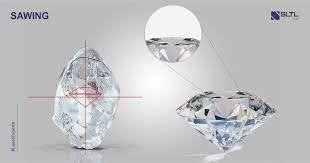Goldsmith: Frame Maker
SECTOR: GEMS & JEWELLERY
SUB-SECTOR: Handmade gold and gems-set jewellery
OCCUPATION: Gold smithy (Basic)
REFERENCE ID: G&J/Q0604
ALIGNED TO: NCO-2004/7313.28
Goldsmith – Frame maker: Goldsmith is also known as ‘Artisan’ or ‘Bench
worker’ in Indian gold jewellery making industry. Goldsmith is an important job
role.
Brief Job Description: The individual works, mainly, with machine and hand
tools to create the base jewellery frame from gold as per design and for further
embellishing with components, gemstones and enamelling and plating. The
goldsmith is responsible for delivering quality gold jewellery with minimum gold
or stone loss.
Personal Attributes: The job requires the individual to have: attention to
details; good eyesight; steady hands; ability to work in a process driven team for
long hours in sitting position; a lot of patience; and creativity. The individual
must also be able to use reflective skills in order to develop improved designs
and work processes, and analytical skills to avoid errors and hazards.
Unit Code G&J/N0605
Unit Title
(Task) Make gold jewellery frame of gold or alloy
Description This OS unit is about making the base frame of gold jewellery for further embellishing
and finishing
Scope The unit/ task covers the following:
Order metal and components for making frame
understand design specifications in terms of regional style applicable, types of
alloy of gold, components and stones required; weight; entire jewellery
making process flow, and delivery schedule
assess quantity of gold required for frame based on product or style type and
design
assess quantity and types of components required for the frame
Make the frame
roll or draw wire, sheet or strip from gold bar as per design requirement
anneal the wire or strip for malleability by heat-treatment using gas torch or
furnace, setting the temperature according to the thickness of the wire or
sheet or strip, removing from heat and quenching in water to cool
repeat the annealing process after every drawing or rolling
cut and saw wire or sheet to make the frame piece
create designs by stamping, embossing, scraping, as per design
check symmetry of design
lay the frame pieces on wax or lac and set in Plaster of Paris (PoP) mixture or
customised jigs
solder components and frame to link frame pieces as per design
remove PoP, level and strengthen joints in wax or lac
send completed frame for cleaning with brush and water or chemical solution
File the frame parts or completed frame
understand design/ specification requirements such as length, bend or
flexibility, colour, evenness, melting point of alloy metal, size and
embellishments to follow
cut any sharp edges and grind for smooth surface
shape collets for stone setting or prepare surface for enamelling
smooth outer periphery surface as per design
avoid over filing
Link and smoothen the frame
solder locks and hinges as per design
ensure correct distance between linked components
avoid under or over soldering
Control gold loss
collect gold dispersed during the day (dust and fragments)
tally account as per allowed standards for the design
conduct regular and controlled environment cleaning for collection
Detect product defects
inform supervisor if a component has arrived with defect
understand the type of defect and send to relevant goldsmith for rework
suggest ways to rectify defect in order to save rework time
Check quality and send frame for quality check (QC)
check filed frame, visually, in order to detect defects such as file marks,
uneven surface, rough edge, loose links, unsoldered joints and impurities
rework as suggested by QC department
re-file product returned from QC department with filing or design defects
Return completed frame and gold to supervisor
return gold dust and filings to supervisor
Report problems about
impractical design
tools shortage and their maintenance related
reasons for anticipated delays that may adversely affect delivery
Element Performance Criteria
Ordering metal To be competent, the user/individual on the job must be able to:
PC1. accurately assess precious metal or alloy required as per design including
beginning weight, gold lost in subsequent processes, and end product weight
PC2. assess component types and quantities required
Making frame To be competent, the user/individual on the job must be able to:
PC3. deliver in time to cleaning, polishing, buffing process
PC4. make accurate replica as per design with minimum rework
PC5. achieve weight, size and detailing dimensions as per design
PC6. achieve improved productivity per design type
PC7. complete wok with minimum hazards and accidents
Filing and linking
frame parts
To be competent, the user/individual on the job must be able to:
PC8. achieve smooth finish and safe to wear ornament
PC9. make strong but flexible joints
PC10. achieve clean soldering without damage to frame
PC11. achieve improved productivity and quality as per design requirement
Controlling gold loss To be competent, the user/individual on the job must be able to:
PC12. maintain loss limit as per company’s loss margin policy
PC13. undertake regular gold-dust cleaning as prescribed by company
PC14. account for loss and maintain related documentation
Quality of output To be competent, the user/individual on the job must be able to:
PC15. achieve size, weight, finish, detailing and dimensions as per design
PC16. maintain utility factor maintained for ease of wearing and safety
PC17. ensure that joints are firm and flexible and frame is even
PC18. achieve QC-okayed base frame
Handling problems To be competent, the user/individual on the job must be able to:
PC19. deliver complete product on time by reporting problems faced or anticipated
well in advance
Knowledge and Understanding (K)
A. Organizational
Context
(Knowledge of the
company /
organization and
its processes)
The individual on the job needs to know and understand:
KA1. company’s policies on: acceptable limits of precious metal loss per product
type; incentives; delivery standards; safety and hazards; integrity and IPR; and
personnel management
KA2. work flow involved in company’s jewellery manufacturing process from one
goldsmith to another
KA3. importance of the individual’s role in the workflow
KA4. reporting structure
KA5. typical customer profile and market trends
B. Technical
Knowledge
The individual on the job needs to know and understand:
KB1. different types of jewellery, e.g., regional styles, making techniques, new styles
such as fusion.
KB2. how components such as balls wire, stampings, and chains are made
KB3. uses of different types of files and tools for different end results
KB4. gold alloy properties such as strength, malleability
KB5. annealing: heat treatments and intensity effect with respect to different types
of gold alloys
KB6. potential work hazards, particularly, when using hand and machine tools as
well as acids
KB7. chemical reactions between non-gold materials used
Skills (S) [Optional]
A. Core Skills/
Generic Skills
Basic reading and writing skills
The user/individual on the job needs to know and understand how:
SA1. to read notes and put notes on design
Measuring and geometry skills
The user/individual on the job needs to know and understand how:
SA2. to assess material requirements as per design
SA3. to assess gold loss at each step of jewellery making so as to deliver product of
correct weight and size
SA4. to translate symmetry aspect of design into jewellery frame
SA5. to translate flexibility and utility aspect of design into frame
Teamwork and multitasking
The individual on the job needs to know and understand how:
SA6. to share work load as required
SA7. to deliver frame to next work process on time
B. Professional Skills Reading design
The individual on the job needs to know and understand:
SB1. how to convert design into frame
SB2. components that go into making the exact product as customer ordered
SB3. how to spot difficulties with respect to practicality of design
Wax and plaster setting technique
The individual on the job needs to know and understand how:
SB4. to set the frame and components accurately in PoP and wax as per design
SB5. to prepare plaster slurry of right temperature and set the frame
SB6. to components and frame on wax or lac plate or jigs
Soldering technique
The individual on the job needs to know and understand how:
SB7. to ensure right amount of heating in order to link the pieces
Using tools and machines
The user/individual on the job needs to know and understand how:
SB8. to draw wire, roll sheets, cut shapes, make components, emboss and scrape
as per design
SB9. the rolling and drawing machines work
SB10. to use the right file and at correct angle for achieving the finish as per design
SB11. to solder in order to get strong links
SB12. to use tools for drawing wire such as: Gas torch or furnace for annealing wire
or strip; drawing tongs and draw plate; wax or oil for lubrication
SB13. to use tools such as files and pliers
SB14. to maintain tools and machines used
SB15. to use technology such as computer for visual aid and efficient working
SB16. to work in a safe environment, i.e., without injuries
Reducing precious metal loss
The user/individual on the job needs to know and understand:
SB17. prescribed precious-metal loss for the entire jewellery piece
SB18. precious-metal loss applicable for the components
SB19. how to reduce precious metal loss below the prescribed standards
SB20. how to collect broken or over rolled pieces, account in job sheet and return
SB21. how to follow company’s policies on collecting gold dust and fragments
SB22. how to suggest improvements in order to reduce precious metal loss limits
Reflective thinking
The user/individual on the job needs to know and understand how to:
SB23. work in sitting or standing for long hours position with correct posture
SB24. maintain clean work environment and organise tools for ease of use
Critical thinking
The user/individual on the job needs to know and understand how:
SB25. to spot process disruptions and delays
SB26. to avoid hazards when using roller machine or draw plate or during annealing
G&J/N9910 Maintain IPR and respect copyright
Unit Code G&J/N9910
Unit Title
(Task) Respect IPR of company as well as competitors
Description This OS unit is about maintaining company’s IPR and avoiding infringement on
copyright of others
Scope This unit/task covers the following:
Protect company’s Intellectual Property Rights (IPR)
prevent leak of new designs to competitors by reporting on time
be aware of any of company’s product or design patents
report IPR violations observed in the market, to supervisor or company heads
Avoid infringement to copyright of other companies
read copyright clause of the material published on the internet and any other
printed material
consult supervisor or senior management when in doubt about using publicly
available information
report any infringement observed in the company
Performance Criteria(PC) w.r.t. the Scope
Element Performance Criteria
Respecting IPR To be competent, the user/individual on the job must be able to:
PC1. spot plagiarism and report
PC2. understand rationale of patents and IPR
PC3. avoid being involved in IPR violations
Knowledge and Understanding (K)
A. Organizational
Context
The individual on the job needs to know and understand:
KA1. company’s policies on IPR, plagiarism and order leaks
KA2. company’s patented products
KA3. market trends and company’s unique product range
KA4. reporting structure
B. Technical
Knowledge
The individual on the job needs to know and understand:
KB1. basics of patents and IPR laws
KB2. how IPR protection is important for competitiveness of a company
Skills (S) [Optional]
A. Core Skills/
Generic Skills
Communication skills
The user/individual on the job needs to know and understand how:
SA1. to effectively communicate any observed IPR violations or design leaks
B. Professional Skills Decision making
The user/individual on the job needs to know and understand when and how:
SB1. to report sources of IPR violations
Reflective thinking
The user/individual on the job needs to know and understand how:
SB2. to learn from past mistakes and report IPR violations on time
Critical thinking
The user/individual on the job needs to know and understand how:
SB3. to spot signs of violations and alert authorities in time
Unit Code G&J/N9912
Unit Title
(Task) Coordinate with co-workers
Description This OS unit is about communicating with colleagues and seniors in order to maintain
smooth ad hazards free work flow
Scope This unit/task covers the following:
Interact with supervisor to:
receive work instructions and raw materials from reporting supervisor
communicate to reporting supervisor about process flow improvements, product
defects received from previous process, repairs and maintenance of tools and
machinery as required
communicate any potential hazards or expected process disruptions
handover completed work to supervisor
Interact with colleagues within and outside the department to:
work as a team with colleagues and share work as per their or own work load and
skills
work with colleagues of other departments such as frame making or component
making or polishing or setting or stores
communicate an discuss work flow related difficulties in order to find solutions
with mutual agreement
receive feedback from QC and rework in order to complete work on time
Performance Criteria(PC) w.r.t. the Scope
Element Performance Criteria
Interaction with
supervisor
To be competent, the user/individual on the job must be able to:
PC1. understand the work output requirements
PC2. comply with company policy and rule
PC3. deliver quality work on time as required by reporting any anticipated reasons
for delays
Interactions with
colleagues and other
departments
To be competent, the user/individual on the job must be able to:
PC4. put team over individual goals
PC5. conflicts resolution and multi-tasking
Knowledge and Understanding (K)
A. Organizational
Context
(Knowledge of the
company /
organization and
its processes)
The individual on the job needs to know and understand:
KA1. company’s policies on personnel management
KA2. work flow involved in company’s jewellery manufacturing process
KA3. importance of the individual’s role in the workflow
KA4. reporting structure
B. Technical
Knowledge
The individual on the job needs to know and understand:
KB1. how to communicate effectively
KB2. how to build team coordination
Skills (S) [Optional]
A. Core Skills/
Generic Skills
Teamwork and some multitasking
The individual on the job needs to know and understand how:
SA1. to share work load as required
SA2. to deliver product to next work process on time
B. Professional Skills Decision making
The individual on the job needs to know and understand:
SB1. how to report potential areas of disruptions to work process
SB2. when to report to supervisor and when to deal with a colleague depending on
the type of concern
Reflective thinking
The individual on the job needs to know and understand:
SB3. how to improve work process
Critical thinking
The individual on the job needs to know and understand:
SB4. how to spot process disruptions and delays
Unit Code G&J/N9914
Unit Title
(Task) Work towards having a safe work environment
Description This OS unit is about being aware of and communicating potential hazards and
dangers of accidents on the job
Scope This unit/task covers the following:
Understand potential sources of accidents
to avoid accidents related to use of potentially dangerous chemicals, gas torches,
sharp tools and hazards from machines
Communicate to reporting supervisor about:
process flow improvements to reduce anticipated or repetitive hazards
mishandling of tools, machines or hazardous materials
electrical problems that could result in accident
Performance Criteria(PC) w.r.t. the Scope
Element Performance Criteria
Understanding of
potential sources of
accidents and
communicating
To be competent, the user/individual on the job must be able to:
PC1. spot and report potential hazards on time
PC2. follow company policy and rules regarding hazardous materials
PC3. deliver quality work on time as required by reporting any anticipated reasons
for delays
Knowledge and Understanding (K)
A. Organizational
Context
(Knowledge of the
company /
organization and
its processes)
The individual on the job needs to know and understand:
KA1. company’s policies on handling: harmful chemicals and sharp tools, safety and
hazards of machines, fire safety and, disposal of harmful chemicals and
materials
KA2. work flow involved in company’s jewellery manufacturing process
KA3. importance of the individual’s role in the workflow
KA4. reporting structure
B. Technical
Knowledge
The individual on the job needs to know and understand:
KB1. how different chemicals react and what could be the danger from them
KB2. how to use machines and tools without causing bodily harm
KB3. fire safety education
KB4. disposal of hazardous chemicals, tools and materials by following prescribed
environmental norms or as per company policy
Skills (S) [Optional]
A. Core Skills/
Generic Skills
Communication skills
The individual on the job needs to know and understand how:
SA1. to effectively communicate the danger
B. Professional Skills Decision making
The individual on the job needs to know and understand:
SB1. importance of reporting potential sources of danger
SB2. appropriate actions to be taken in the event of an accident
SB3. procedure for disposing of hazardous materials, safely and following
environmental guidelines
Reflective thinking
The individual on the job needs to know and understand how:
SB4. to learn from past mistakes regarding use of hazardous machines or
chemicals or gas torches
Critical thinking
The individual on the job needs to know and understand:
SB5. how to spot danger
SB6. procedure to follow in the event of a fire or other hazard
Keywords /Terms Description
Sector Sector is a conglomeration of different business operations having similar
business and interests. It may also be defined as a distinct subset of the
economy whose components share similar characteristics and interests.
Sub-sector Sub-sector is derived from a further breakdown based on the
characteristics and interests of its components.
Occupation Occupation is a set of job roles, which perform similar/ related set of
functions in an industry.
Function Function is an activity necessary for achieving the key purpose of the
sector, occupation, or an area of work, which can be carried out by a
person or a group of persons. Functions are identified through functional
analysis and form the basis of OS.
Sub-function Sub-functions are sub-activities essential to fulfil the achieving the
objectives of the function.
Job role Job role defines a unique set of functions that together form a unique
employment opportunity in an organisation.
Occupational Standards
(OS)
OS specify the standards of performance an individual must achieve
when carrying out a function in the workplace, together with the
knowledge and understanding they need to meet that standard
consistently. Occupational Standards are applicable both in the Indian
and global contexts.
Performance Criteria Performance criteria are statements that together specify the standard of
performance required when carrying out a task.
National Occupational
Standards (OS)
NOS are occupational standards which apply uniquely in the Indian
context.
Qualifications Pack (QP) QP comprises the set of OS, together with the educational, training and
other criteria required to perform a job role. A QP is assigned a unique
qualifications pack code.
Unit Code Unit code is a unique identifier for an Occupational Standard, which is
denoted by an ‘N’
Unit Title Unit title gives a clear overall statement about what the incumbent
should be able to do.
Description Description gives a short summary of the unit content. This would be
helpful to anyone searching on a database to verify that this is the
appropriate OS they are looking for.
Scope Scope is a set of statements specifying the range of variables that an
individual may have to deal with in carrying out the function which have
a critical impact on quality of performance required.
Knowledge and
Understanding
Knowledge and understanding are statements which together specify the
technical, generic, professional and organisational specific knowledge
that an individual needs in order to perform to the required standard.
Organisational Context Organisational context includes the way the organisation is structured
and how it operates, including the extent of operative knowledge
managers have of their relevant areas of responsibility.
Technical Knowledge Technical knowledge is the specific knowledge needed to accomplish
specific designated responsibilities.
Core Skills/ Generic
Skills
Core skills or generic skills are a group of skills that are the key to learning
and working in today’s world. These skills are typically needed in any
work environment in today’s world. These skills are typically needed in
any work environment. In the context of the OS, these include
communication related skills that are applicable to most job roles.
Keywords /Terms Description
IPR Intellectual Property Rights
NOS National Occupational Standard(s)
NVQF National Vocational Qualifications Framework
NSQF National Qualifications Framework
NVEQF National Vocational Education Qualifications Framework
QP Qualifications Pack
CRITERIA FOR ASSESSMENT OF TRAINEES
Job Role Frame Maker
Qualification Pack G&J/Q0604
Sector Skill Council Gem & Jewellery
Guidelines for Assessment
- Criteria for assessment for each Qualification Pack will be created by the Sector Skill Council. Each
Performance Criteria (PC) will be assigned marks proportional to its importance in NOS. SSC will also lay down
proportion of marks for Theory and Skills Practical for each PC. - The assessment for the theory part will be based on knowledge bank of questions created by the SSC.
- Individual assessment agencies will create theory question papers for candidates at every
examination/training centre. (as per assessment criteria below) - Individual assessment agencies will create practical tests for skill evaluation for candidates at every
examination/training centre. (as per assessment criteria below) - To pass the Qualification Pack, every candidate should score a minimum of 50% in theory and 70% in
practical to successfully clear the assessment. - In case of successfully passing only certain number of NOS’s, the candidate is eligible to take subsequent
assessment on the balance NOS’s to pass the Qualification Pack.









